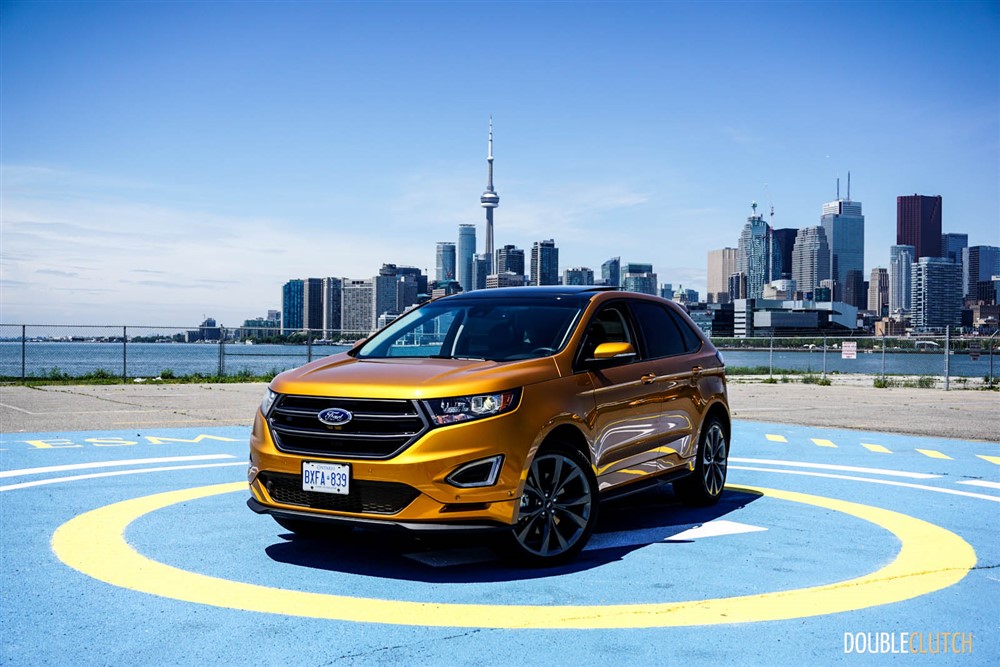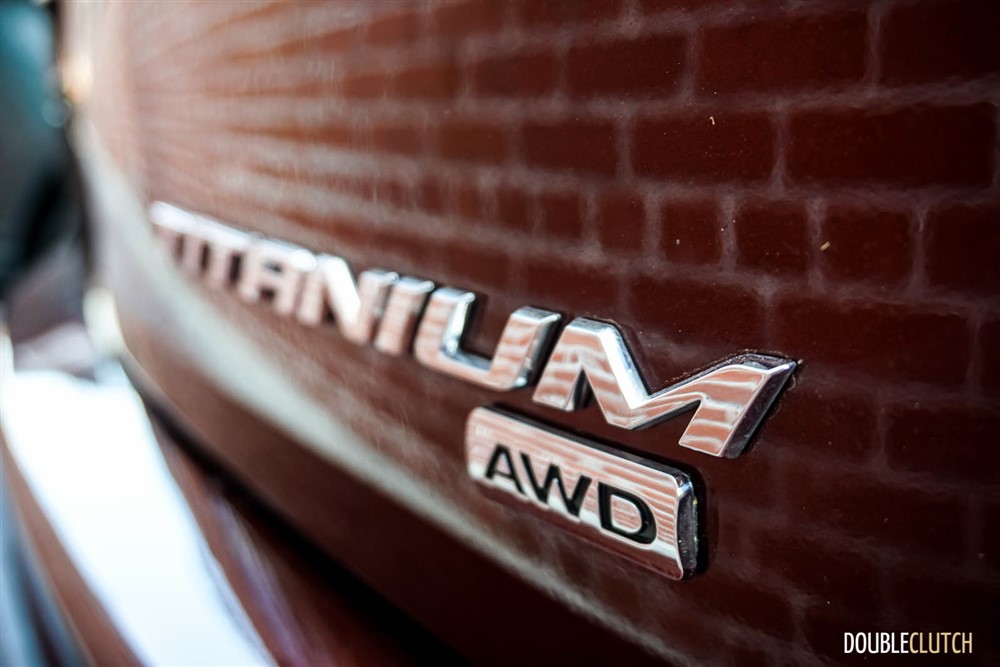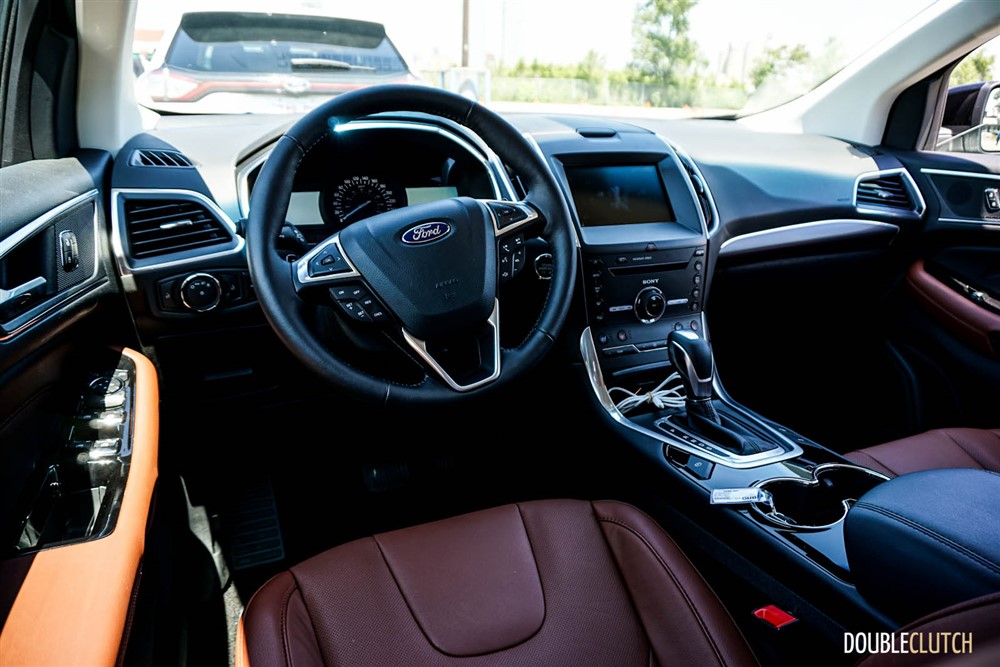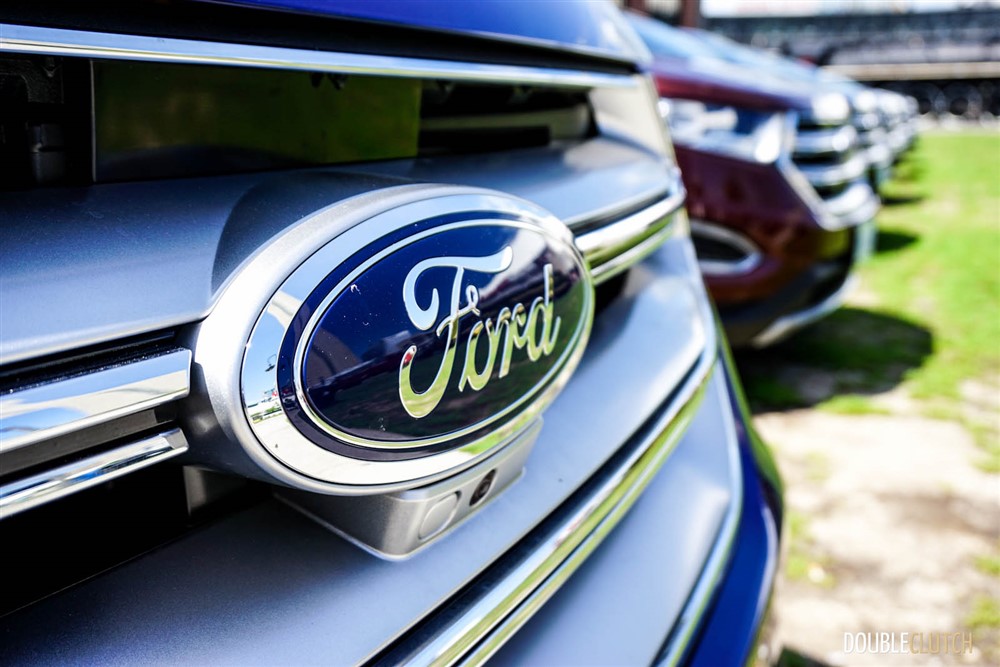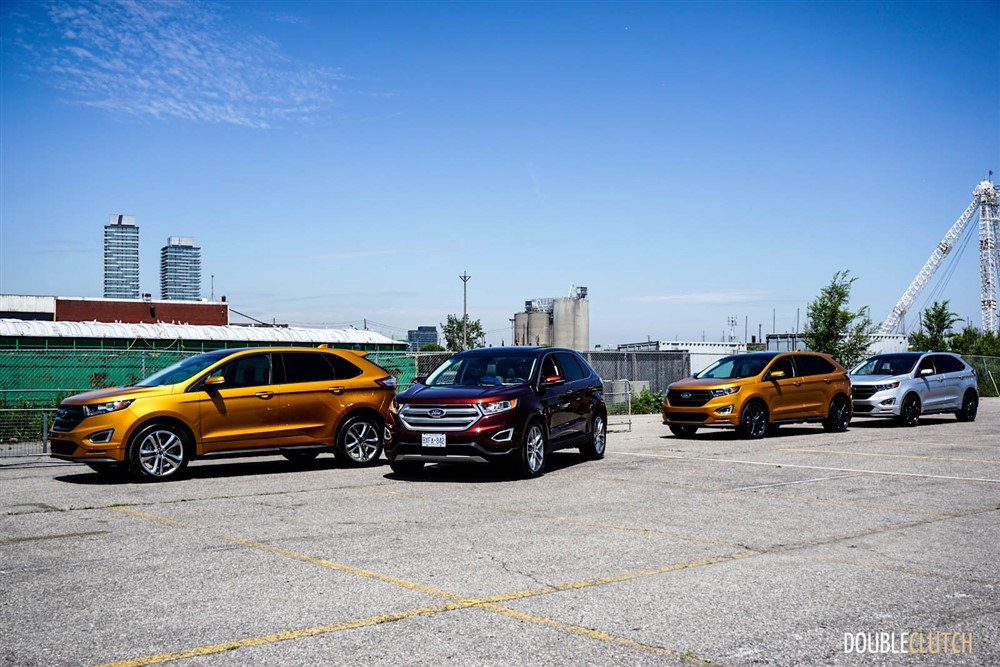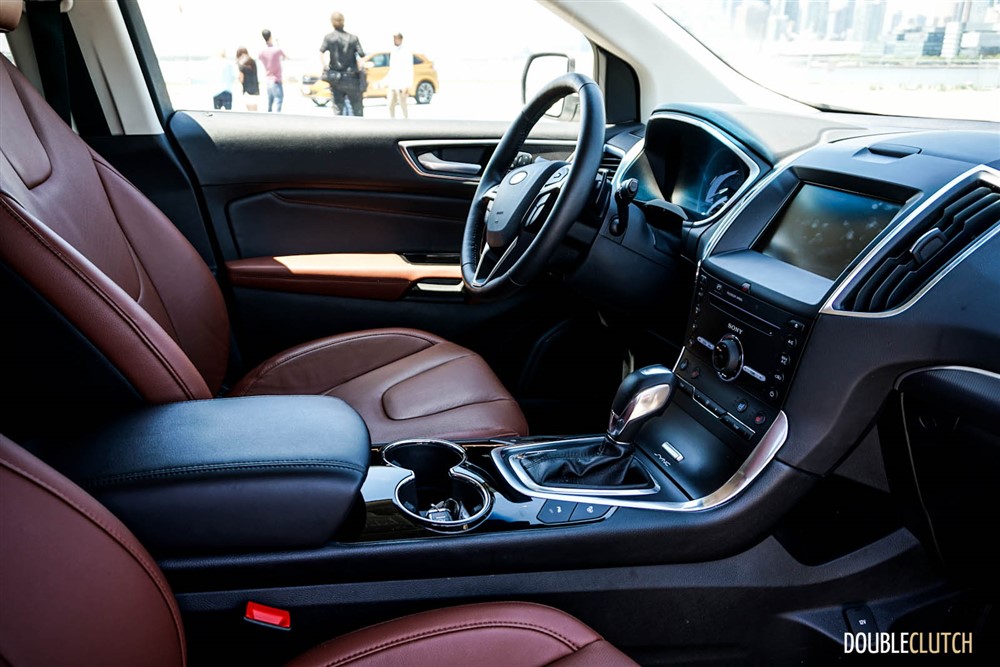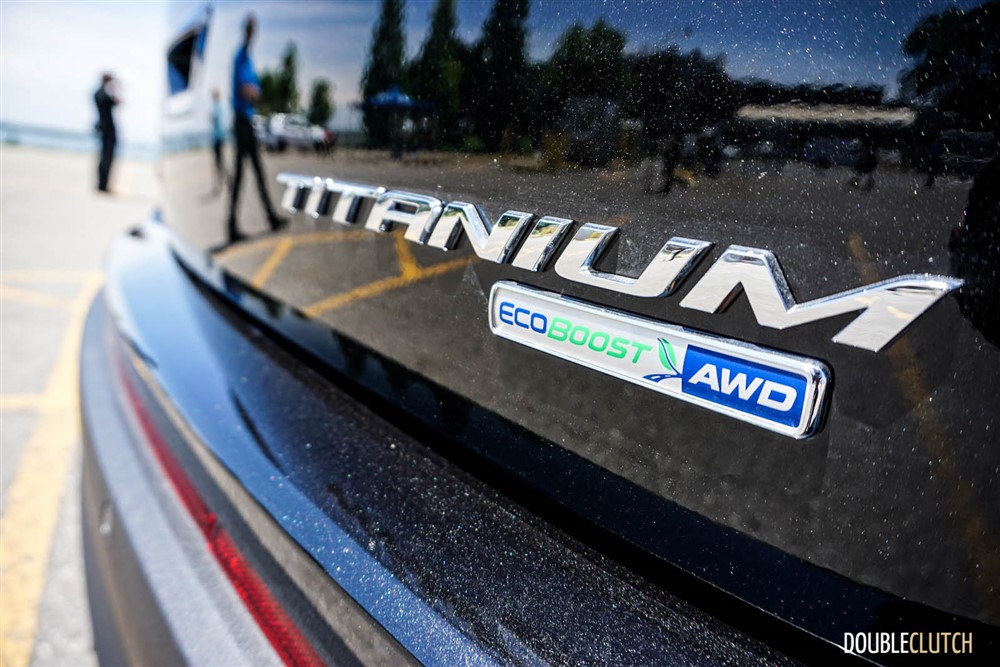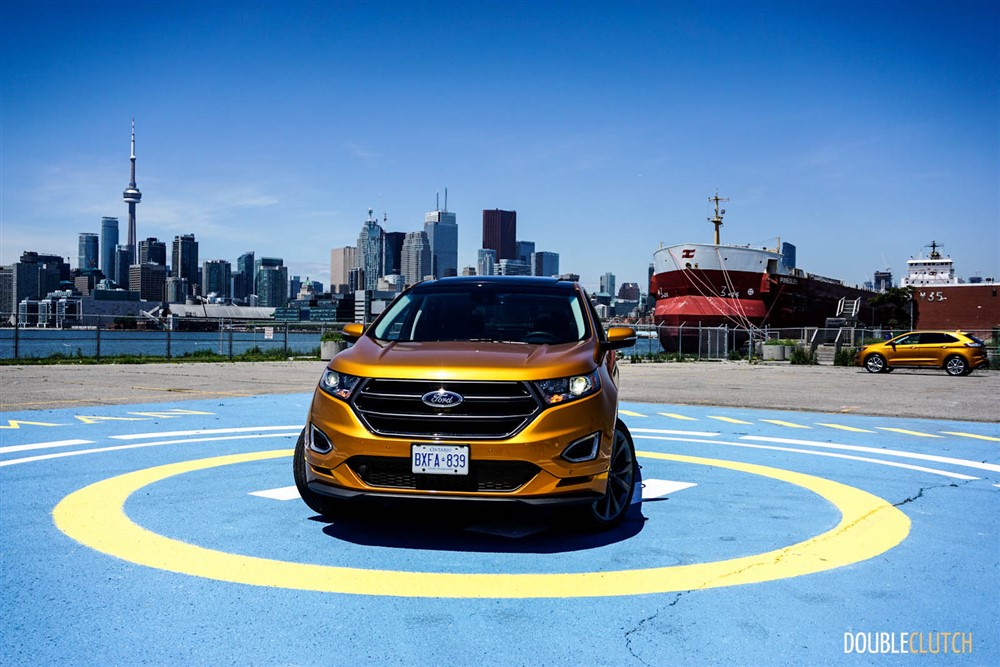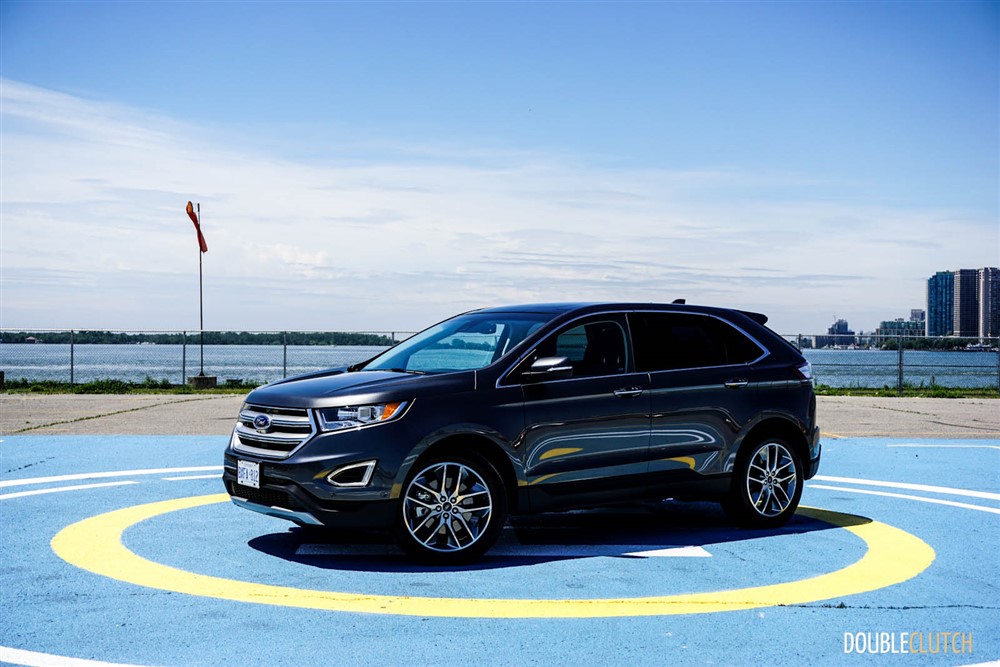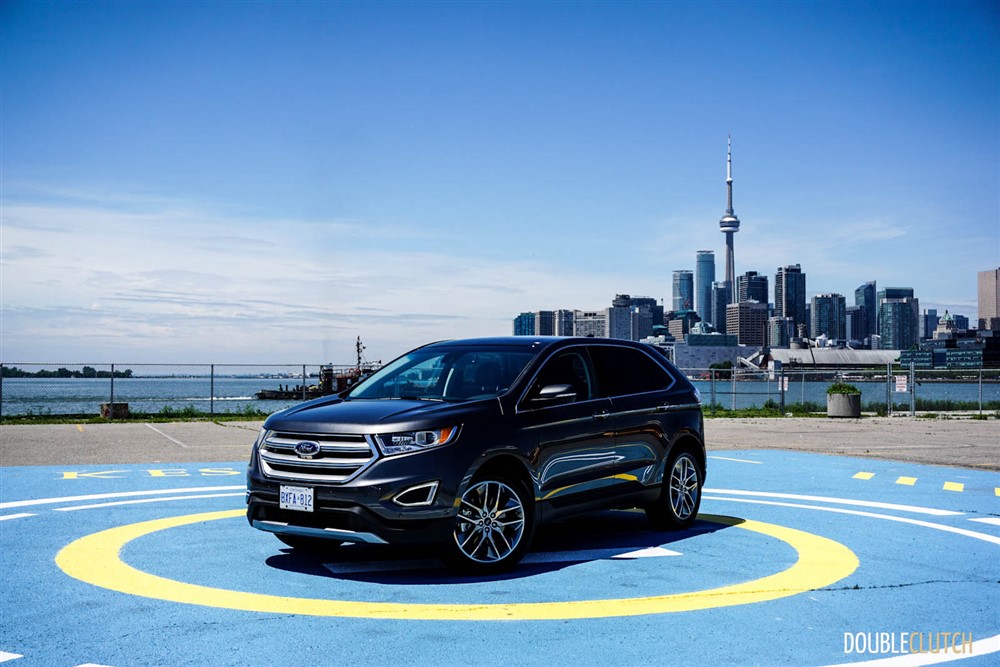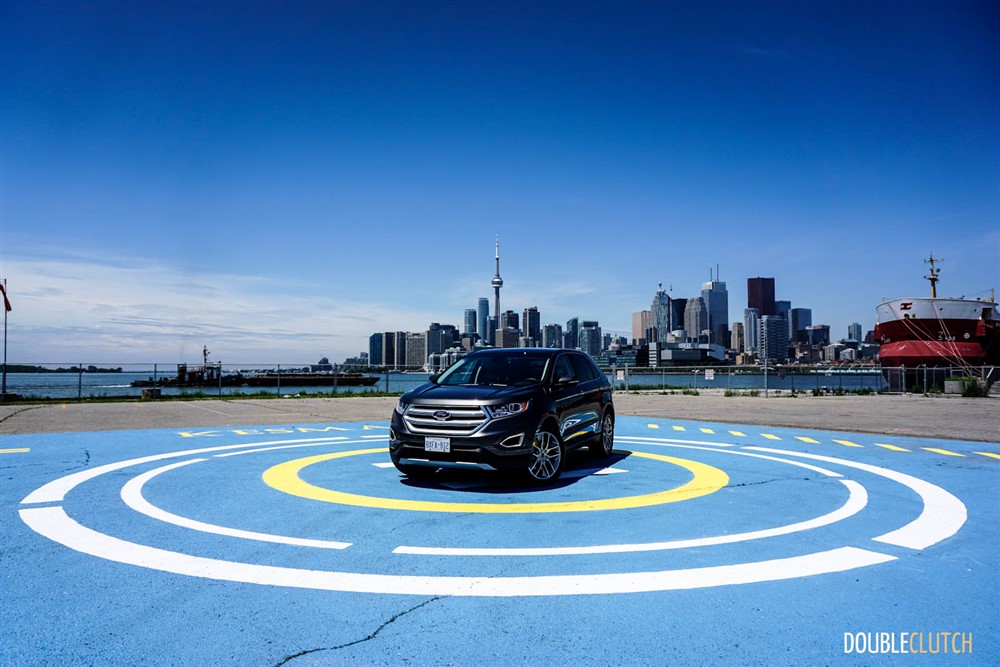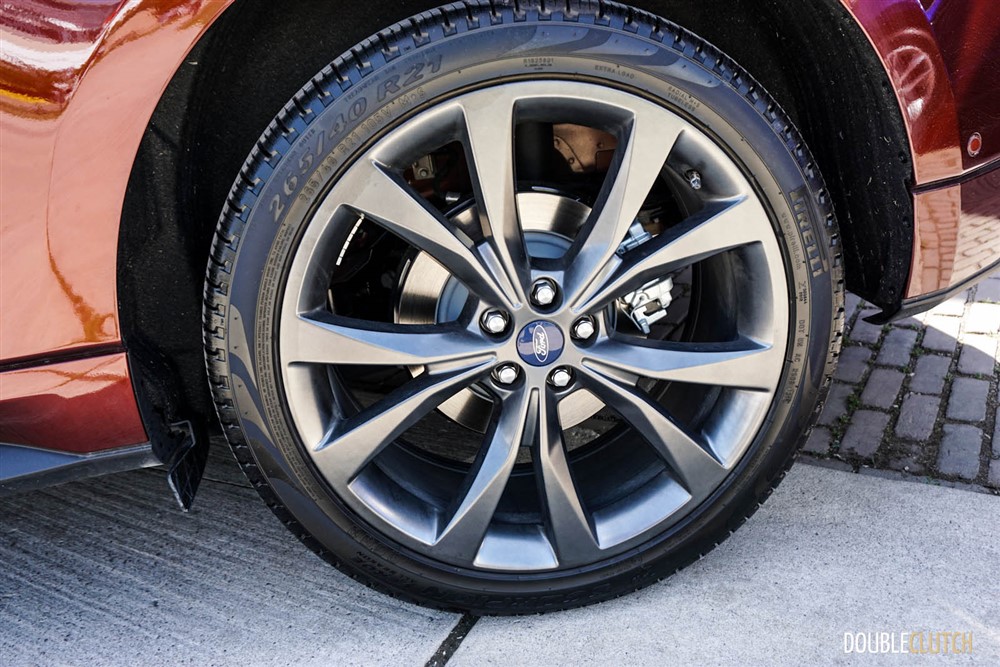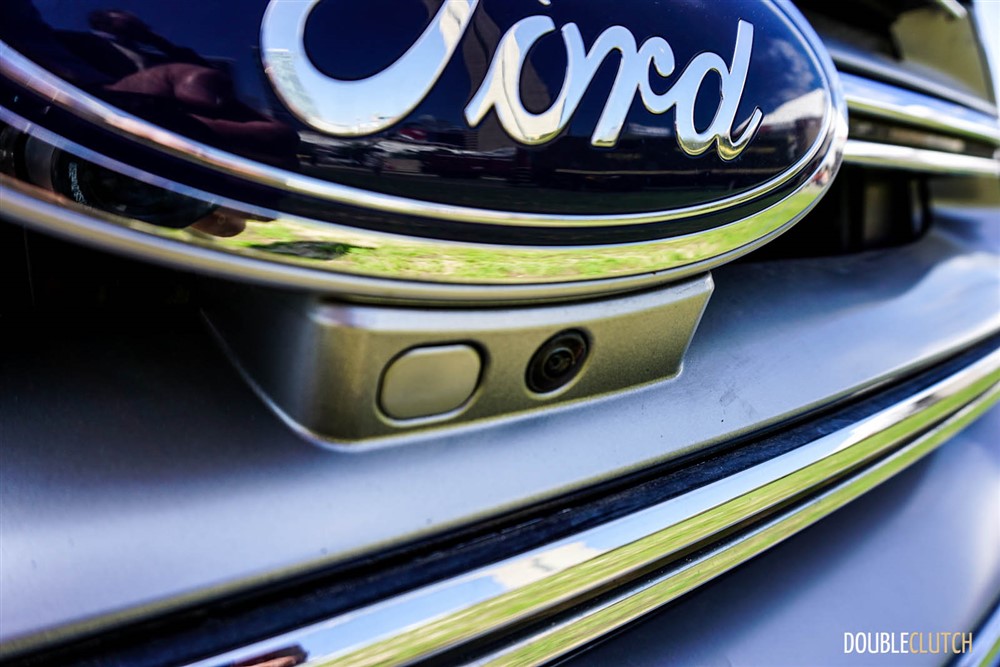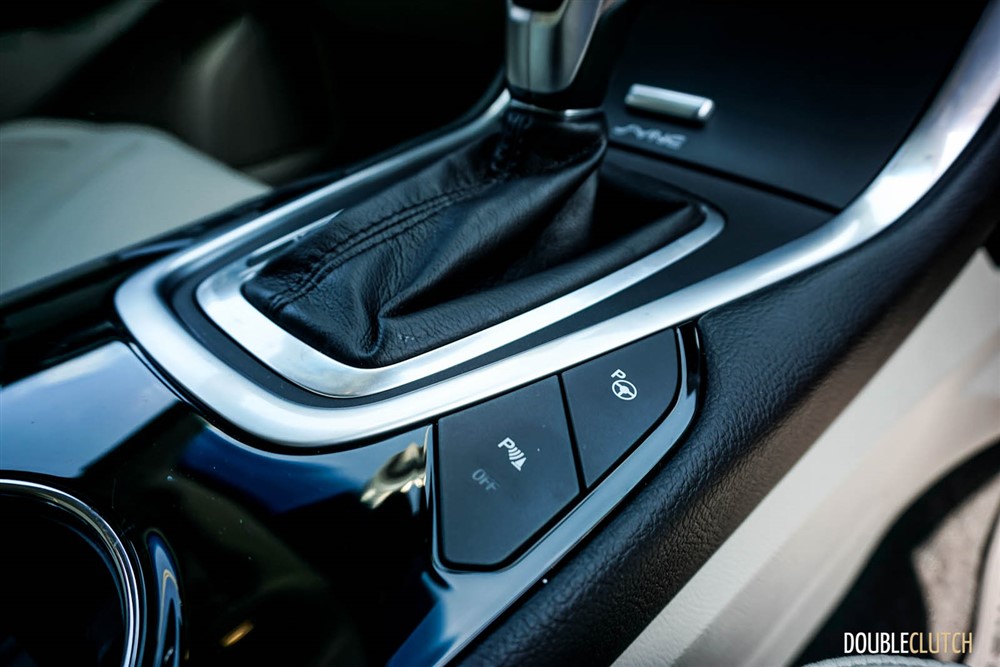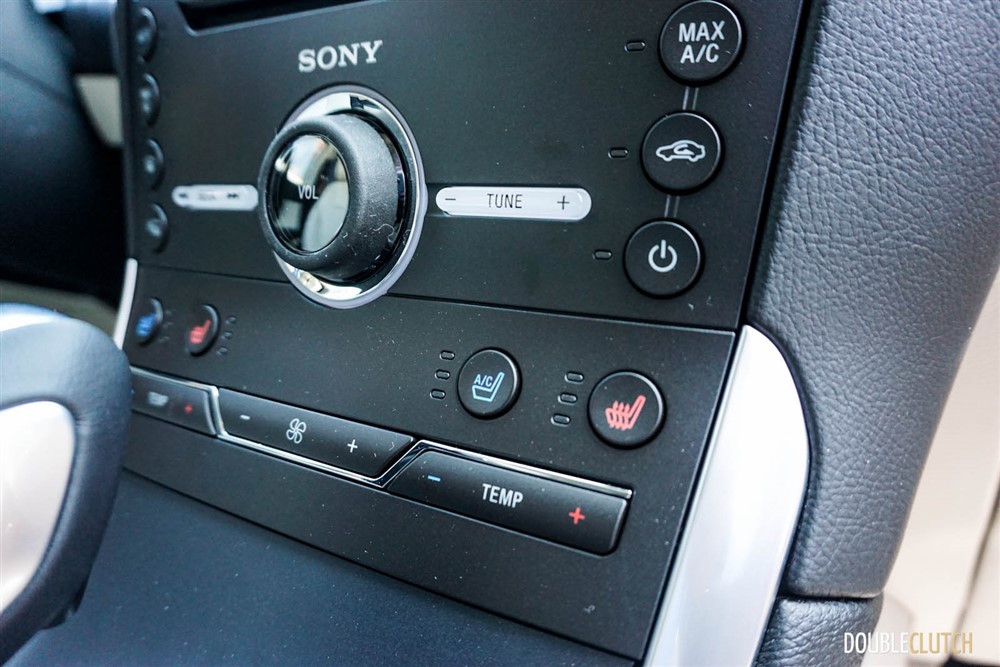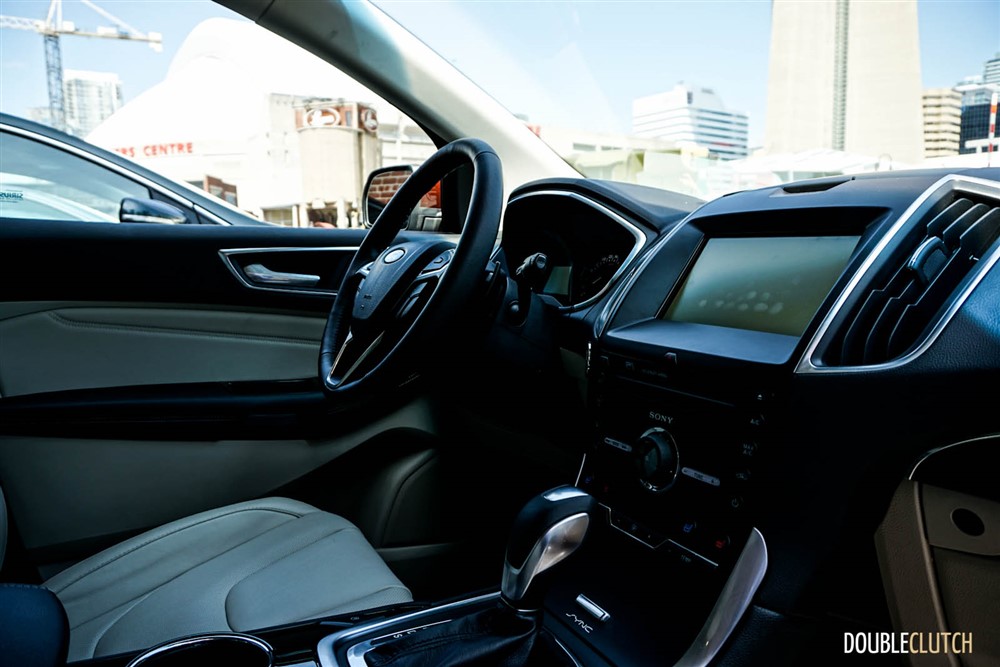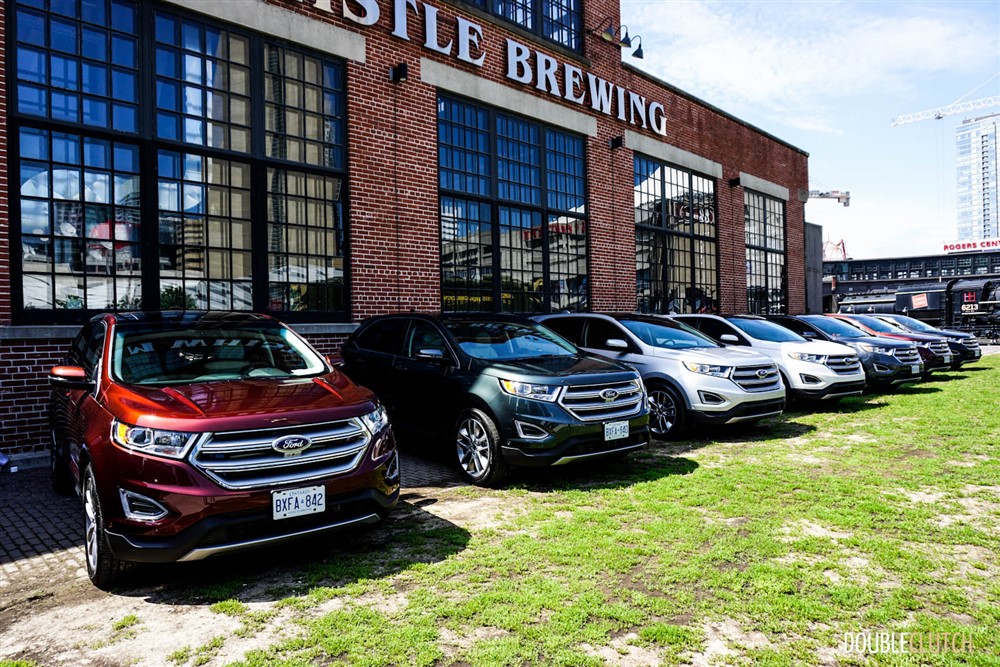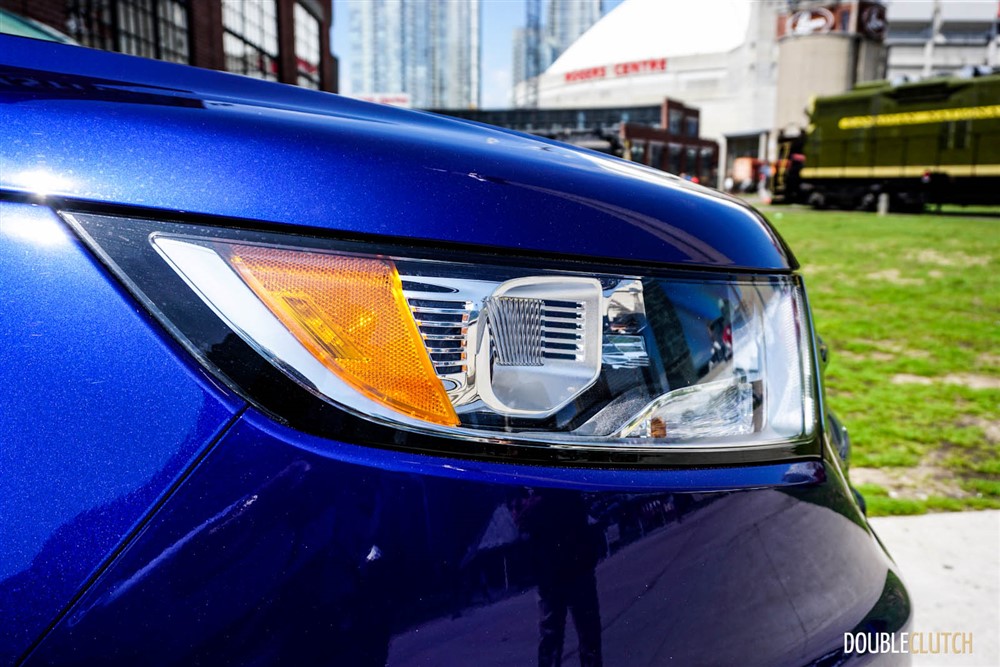Toronto, ON – The Ford Edge has been one of the leaders of the crossover segment since its conception nearly a decade ago. When it first premiered in 2007, it essentially proved to North Americans that there could be a happy medium between the sport-utility-vehicle and the family-friendly station wagon. This year marks the first full redesign of the Edge, other than a mid-cycle refresh halfway through the first-generation. I was invited to partake in a first drive event located in my home city of Toronto, Ontario and experience the all-new 2015 Ford Edge for myself.
As a pun built onto the “Edge” name, Ford Canada arranged for a group of media (including myself) to partake in the “EdgeWalk” experience at Toronto’s CN Tower. After our product presentation and media drive of the new Edge, we had the chance to literally hang hundreds of meters in the air from one of the world’s tallest freestanding structures, held on by nothing more than a strong harnesses. An excellent gesture and a clever idea on Ford’s part; the adventure was definitely a memorable one.
While the first-generaiton Edge was based on the Ford CD3 platform, which it shared with the Mazda CX-9, the first and second generation Mazda6, Lincoln MKX, and Ford Fusion, this new model is freshly designed from the ground up. Stylistically, it’s a very attractive crossover and is very obviously a Ford, as it shares the corporate grille with the Taurus and other applications from the blue oval. It’s still an intermediate crossover and competes with the likes of the Toyota Venza while exhibiting a number of upscale treatments and premium fittings.
Mechanically, the new Edge offers three powertrains. The entry-level model packs a 2.0L turbocharged EcoBoost 4-cylinder engine, pushing 245 horsepower at 5500rpm and 275 lb-ft of torque at 3000rpm. Holding the middle of the pack is a conventional naturally aspirated 3.5L V6 good for 280 horsepower at 6500rpm and 250 lb-ft at 4000rpm. The top-level Edge Sport, along with a series of other fancy bits, is powered by the same twin-turbocharged 2.7L EcoBoost V6 as the F-150 with 310 horsepower at 4750rpm and 350 lb-ft of torque at 2750rpm. Along with vastly improved numbers in the powertrain department, Ford has implemented lightweight materials that reduce the overall weight of the Edge by 23kg despite the slight increase in size.
All of the Edge’s engine options are seamless in operation, and there’s an awesome “whoosh” from the turbochargers operating in both EcoBoost models, but the key here is that every single engine feels more powerful and modern than the outgoing model. The Sport especially, which packs 70 horsepower and 75 lb-ft of torque over the outgoing model, is a proper thrill that’s a pleasure to guide through any sort of environment. I had the opportunity to hustle it through the city as well as experience some fun on a closed course, and the Edge didn’t fail to impress in either of these conditions. I have faith in Ford’s ability to deliver a crossover that will undoubtedly be just as effortless in operation during the cold months as well.
The Edge is also offered in both front-wheel-drive and all-wheel-drive variants (the Edge Sport is AWD only), and when properly equipped, is able to tow up to 3500lb (with the 2.0L motor). Though, Ford does not recommend towing with the Edge Sport’s 2.7L EcoBoost motor. Although the Edge appears to have the same general profile as the previous model, Ford insists that every panel is all-new, and that they have focused on maintaining loyalty from existing Edge customers while eliminating the weaknesses of previous models. It’s important to remember that as a five-seat crossover that’s considerably bigger and more premium than the likes of the Mazda CX-5 and Subaru Forester, the Edge doesn’t have nearly as many competitors as it once did.
As we’ve seen with the trend in the automotive industry, every vehicle is slowly getting larger and larger, and the new Ford Edge is no different. The slightly bigger size (virtually unnoticeable to the naked eye or the mainstream consumer) results in slightly increased rear legroom, 25mm to be exact, and a huge increase in overall cargo space.
Not only is the new Edge bigger than the last one, but it’s a lot quieter as well. The acoustic glass used for the windshield and front windows helps considerably in reduction of engine, road, and tire noise. Additionally, sound-deadening material has been used throughout the underside of the crossover to minimize noise even more – and it shows. The new Edge is Lexus RX-levels of quiet, something no other crossover has been able to pull off in the past no matter how hard they have tried. Additionally, the ride has been vastly improved by means of new suspension geometry and a multilink rear suspension. The front suspension remains the same MacPherson setup as the outgoing model, but with tweaks for improved ride and handling.
All models of the 2015 Edge come with a standard rear-view camera. Adding to the suite of new technology on the crossover, the optional front-view camera has a self-cleaning feature that shoots a little bit of washer fluid whenever the windshield is squirted. This is going to be exceptionally useful in the winter when the car gets caked in salt and other dirt from the roads, and would be even better if it applied to the rear camera as well. The new Edge also boasts Ford’s brilliant self-parking system, which is capable of using the cameras and sensors to parallel park the crossover. The intelligent parking system also has enough of a brain to physically pull the car out of the parking spot as well. For the first time ever, this feature is also capable of perpendicular parking. Naturally, as with any new technological feature, there are minor glitches.
The technology continues throughout the interior of the new Edge, as it boasts adaptive cruise control as well as lane keeping assist. To sum it up; it’s capable of driving itself at highway speeds including the ability to steer back into the lane if the driver dozes off, as well as parking itself. In a mainstream application, this is a pretty bold step towards the inevitable future of autonomous cars. The 2015 Edge is also a winner in terms of fuel efficiency. The front-wheel-drive model with the 2.0L EcoBoost engine is said to do as well as 7.8L/100km on the highway, and can get away with regular fuel. The typical Edge driver can expect numbers in the 10-11L/100km vicinity.
Pricing for the new Ford Edge starts at $31,999 for the base FWD SE model, and goes as high as $45,199 for the Sport AWD. The average Canadian buyer will likely opt for either the SE or SEL models with the all-wheel-drive, which range between $33,999 and $37,099 depending on the trim level. Something that is disappearing quickly from our market is the ability to mix and match option packages within trim levels, and Ford is one of the few manufacturers that continues to offer this, so there are virtually unlimited permutations of Edge that can be had for aggressive prices.
I last drove an Edge in 2013, and it was a naturally aspirated V6 model. Thanks to the implementation of EcoBoost in the vast majority of the Ford lineup, along with the polished and intuitive MyFordTouch system, the crossover has matured into a handsome and competitive choice. Families who have no need for a third row but prefer the crossover body style will appreciate the 2015 Ford Edge, and I have no doubts that it will continue to be a bestseller for years to come.
First Drive: 2015 Ford Edge Gallery
See Also:
2015 Toyota Venza AWD
First Drive: 2016 Honda Pilot
2015 GMC Acadia Denali


